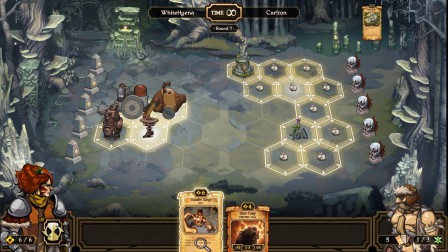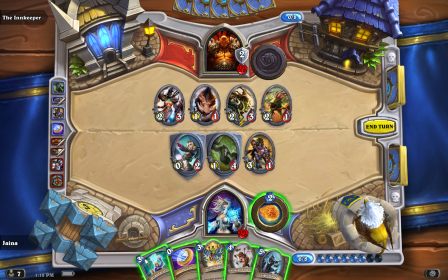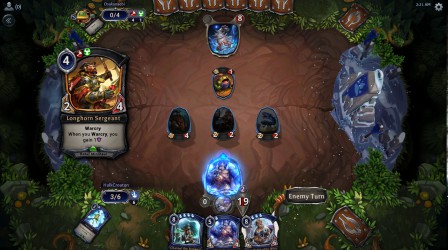There is one important thing to note about this game. It was one of the very first of its kind, and players where not yet used to giving value to digital assets. Wizards thus decided, in order for people to trust the value of their cards, to tie the digital cards to physical cards. Basically, players who own one of each cards of a set can exchange them for a printed copy of those cards, sent to their home. This has a huge impact on the economy of MTGO. Booster packs cost approximately the same as physical packs, and so do cards. This means that playing online is almost as expensive as playing the physical game (which is known to be, erm, not cheap). It also means that if you play both versions, you'll have to buy your cards twice.
One cool thing about MTGO is that there is a trading platform included. So it is somewhat easy to trade your cards for cards you want, or to buy them with "tix" — short for tickets, used to pay for playing in events, and which became the game's currency for the lack of anything else. However, what happened over time was that bots took over the marketplace. Nowadays, seldom anyone actually trades with real players. Folks just go to the cheapest bot to buy cards, and sell to the ones that buy for the best price. It turns out that trading doesn't work well in the digital space.
Now, MTGO was released in 2002. From there, it took more than 10 years for the digital CCG genre to actually take up. The game that, for me, started the wave was called… Scrolls! (Nope, not Hearthstone… ;-) ) Scrolls was a CCG that was played on a board of hexagonal tiles. Unexpectedly, it was created by Mojang, the studio behind Minecraft. The game is now dead, but it was released for free, including the server, in 2018 as Caller's Bane.
Scrolls brought to the genre the usage of a board to play your creatures. With countdown between attacks, different hitting patterns, and various movement possibilities, the game offered a nice tactical challenge. It also scratched the surface of doing effects that would not be practical in a physical card game.
However, games were too long (I remember playing one that lasted an hour and a half) and the resource system made playing multiple colors really hard, lowering deck diversity. The game had a trading system that, just like MTGO's, ended up overwhelmed by bots. At some point, the devs moved to a black market system, where you could sell your cards automatically, which was much more practical. Overall, the game had a complex economy that didn't really work, especially in a game that was not free-to-play (the game cost 20€ upfront).
Even with all its problems, Scrolls was doing quite well. That is, until a certain Hearthstone was released in 2014. Created by Blizzard and set in the world of Warcraft, this is to this day the most successful digital CCG. I have to be honest: I dislike this game. And I dislike it for all the reasons that I believe actually made the game successful!
To make Hearthstone, the designers took Magic, took an axe, and used the latter to chop down the former. They tried to remove as much of the complexity of CCGs, until they had just the very core. The result is a very simplified game in terms of core mechanics. The resource system is fully automated, you gain one new resource each turn. The combat system is much simpler than Magic's: take your creature, choose which opposing creature it fights, and that's it! And finally, there are almost no way to do anything during your opponent's turn.
To some extent, Hearthstone can be considered more of a puzzle game than a strategy game. Each turn, you have a new puzzle to solve: how do you use your mana, you cards and your board to best destroy your opponent. Then you do that again the following turn. The long-term strategic aspect is less impactful than in previous games of the genre.
The automated resource system means that games have less variance in them. You will always have your 4 mana on turn 4. To compensate for that, the developers made extensive use of randomness in card effects. There's good and there's bad randomness: Hearthstone's leans more on the bad side, the one that makes players feel bad. The game also has no colors, instead relying on classes inherited from World of Warcraft. There are 9 classes, each enabling one or several archetypes, depending on the format, as well as neutral cards that can be played with any classes. I feel like that system could make games repetitive, as you'd face the same heroes again and again, but in practice it seems there are enough sub-archetypes for each class that it isn't the case.
So, what did Hearthstone bring to the genre? Well first and most importantly, it brought digital CCGs into the light. Lots of folks who never played card games before got into it. The simplicity of the game rules clearly payed off, as well as, I assume, the fame of the Warcraft license. The game also proposed a way of solving the excess cards problem. See, when you open random boosters, you can get anything, including cards that you already possess. But decks have a limit to the number of identical cards you can play, so any cards above that number you own is utterly useless. In Hearthstone, those excess cards are automatically turned into a new currency, dust, that you can use to craft other cards. This model would quickly be adopted by most CCGs that came afterwards.
As much as I dislike it, Hearthstone was a game changer for the genre. The simplicity of its rules, and the excellency of its interface, brought a shining light on the digital CCG genre, and started its golden age. And it turns out that almost 7 years after its release, players are still enjoying it, and no one has been able to take its throne. That was not for lack of contenders, as we'll see in the rest of this story…
The next stop in our historical tour of digital CCGs is Duelyst, released in 2015. This game, like Scrolls, plays on a board, but this time players have an avatar on the board, and the goal is to kill your opponent's using creatures and spells. In terms of complexity, the game is very close to Hearthstone (automated resource system, fairly simple cards, deck archetypes centered around "Generals") but adds in a tactical board where you have to play and move your creatures.
The tactical board design space exploration is really what Duelyst contributed to the genre. In that regard I believe it did a good job, and was quite successful. It did have the feeling of being a succession of puzzles though, like Hearthstone. Still, I don't know why the game was stopped in 2020. Maybe the sub-genre of CCG-with-board is too niche?
In 2016, Eternal came out. The best way to describe this game is to call it the child of Magic and Hearthstone. From Magic, it takes cards that you can play during your opponent's turn (though with less granularity), a slightly similar resource system (but color requirements work differently), and the variety of card types. From Hearthstone it takes the combat system, the general economy, and the game interface. Overall, the game is not very innovative, and the only reason I played it was because I was okay playing a mediocre Magic if it meant not having to endure MTGO's interface and economy. The game is still alive today, though.
The mana system is the main thing Eternal contributed to the genre. It has five colors just like Magic, and you can mix those colors as you want in your decks. However, you do not have lands that you need to tap to play cards. What Eternal does is that it separates the two components of the resource system: cost paying and color requirement. On one side you have mana, it's a resource that you can spend to pay for cards, and that refills each turn. Mana dictates how many cards you can play in a turn. On the other side, you have color levels, that you always keep, and that unlock playing cards. Once you reach level 3 in blue, you will be able to play all the cards you have that require 3 or less blue levels, for the rest of the game. This is a very smart way to reproduce something similar to Magic's color pie without having to manually handle lands as you would do in the physical game.
And that's it for today! Next week we'll finish our historical tour of the CCG genre, looking at games released between 2017 and 2020.
Read the next part: History of a genre, part 2: 2017 - 2020 or go back to the introduction of this series.







Comments
This doesn't seem like much of a 'history of the genre' and more a history of a handful of games you personally played.
Like it's cool you talked about Scrolls but you forgot about a ton of other games. For example, Pokemon (PTCGO) which was released in 2012. PTCGO also has trading, and although no real world value is tied to the virtual cards, in basically every physical PTCG product you get a code card for a matching digital product. So it's a two for one value, which is unique to the genre although MTCG is experimenting with this in a limited way now. Also it's completely free to play with no in-game micro-transactions, unless you count buying the code cards off other people (but that's not in-game).
And I know the other big ass popular real world TCG, Yu-Gi-Oh, has had a number of online versions too. So even just forgetting about the smaller TCGs that don't have 20+ year old physical versions you missed some big obvious properties.
Hi R, thank you for your comment.
Pokémon TCG falls into the category of paper-first CCGs that I decided not to include in my study, with the exception of Magic. The same goes for Yu-Gi-Oh. I am not saying these are not interesting, simply that I had to set a line somewhere and that's the one I chose.
I also did not intend to make this an exhaustive list of all the digital CCGs that ever existed. It would have been both extremely long (look at the list on Wikipedia: https://en.wikipedia.org/wiki/List_of_digital_collectible_card_games ) and quite boring to read. The ones I chose are the ones I played, so I could speak about them, and the ones I think brought something new to the genre.
I am, however, always interested to read about games that I do not know, to discover what they did differently, etc. So if you have such games you'd like to talk about, please do so! :)